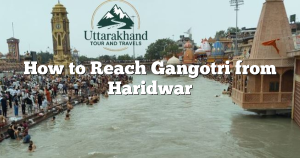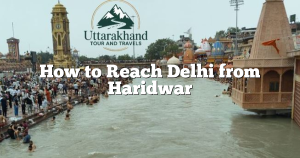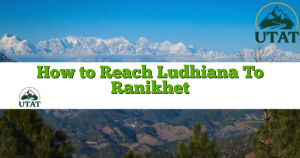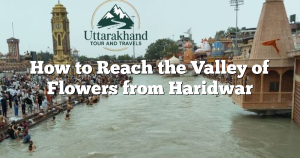Uttarakhand, a beautiful state nestled in the Himalayas, is famously divided into two distinct administrative and cultural regions: Garhwal and Kumaon. While they both share the majestic backdrop of the Himalayas and a deeply spiritual essence, they possess unique geographical features, historical narratives, cultural practices, and even distinct languages that set them apart.
Understanding “what is Garhwal and Kumaon” involves delving into these differences, which have shaped the identity and appeal of each region.
What is Garhwal and Kumaon?
Garhwal and Kumaon are the two primary administrative and cultural divisions of the Indian state of Uttarakhand. Historically, these regions were separate kingdoms, and their unique identities have been preserved through centuries of distinct geographical, linguistic, and cultural development.
Garhwal: The Land of Forts, Peaks, and Sacred Sources
Garhwal occupies the western part of Uttarakhand and is renowned for its towering Himalayan peaks, rugged terrain, and its immense spiritual significance as the source of major holy rivers.
Geographical Characteristics of Garhwal:
- Dominant Peaks: Garhwal is home to some of the highest and most iconic peaks of the Indian Himalayas, including Nanda Devi (the highest entirely within India), Trishul, Kamet, Chaukhamba, and Shivling. The landscape is often dramatic, with sharp, high-altitude ranges.
- River Origins: This region is the birthplace of India’s most sacred rivers. The Gangotri Glacier is the source of the Bhagirathi River (which becomes the Ganga after its confluence at Devprayag), and the Yamunotri Glacier is the source of the Yamuna River.
- Deep Valleys and Confluences: Rivers in Garhwal carve deep, often narrow, valleys. The region is famous for its “Prayags” or sacred confluences, where major rivers meet. Examples include Devprayag (Alaknanda + Bhagirathi = Ganga), Rudraprayag (Alaknanda + Mandakini), and Vishnuprayag (Alaknanda + Dhauliganga).
- Rugged Terrain: The topography is generally more rugged and mountainous compared to Kumaon, featuring steep slopes and challenging terrains, which are ideal for trekking and mountaineering.
- Notable Districts: Major districts within Garhwal include Dehradun (the state capital), Haridwar, Rishikesh, Uttarkashi, Chamoli, Pauri Garhwal, and Rudraprayag.
Historical and Cultural Aspects of Garhwal:
- Historical Rule: Historically, Garhwal was ruled by the Panwar/Parmar dynasty for several centuries. The name “Garhwal” itself is derived from “garh” (fort), referring to the numerous small forts that existed in the region before being unified under one kingdom.
- Language: The predominant language spoken in Garhwal is Garhwali, which has its own distinct dialects and a rich folk tradition.
- Spirituality and Pilgrimage: Garhwal is often called the “Land of Gods” due to the presence of the revered Char Dham pilgrimage sites: Badrinath, Kedarnath, Gangotri, and Yamunotri. This makes religious tourism a cornerstone of its identity.
- Culture: Garhwali culture is deeply intertwined with its spiritual heritage and the rugged mountain life. Festivals often have strong religious undertones, and folk dances and songs frequently narrate tales of gods, heroes, and nature. Traditional attire for men often includes a dhoti, kurta, and turban, while women typically wear vibrant sarees with distinctive jewelry like the large Garhwali Nathuli (nose ring).
- Cuisine: Garhwali cuisine is known for its simplicity and hearty nature, often featuring dishes made from local lentils and vegetables, such as Phaanu, Kafuli, and Thechwani.
Key Attractions in Garhwal:
- Char Dham Pilgrimage: The four revered shrines of Badrinath, Kedarnath, Gangotri, and Yamunotri.
- Haridwar & Rishikesh: Major spiritual centers on the plains, famous for Ganga Aarti, yoga, and adventure sports.
- Valley of Flowers & Hemkund Sahib: A UNESCO World Heritage site known for its vibrant alpine flowers and a sacred Sikh pilgrimage site.
- Auli: A popular ski destination in winter, offering stunning views.
- Mussoorie: A famous colonial-era hill station.
- Chopta-Tungnath-Chandrashila: Known for its serene beauty and the highest Shiva temple in the world.
Kumaon: The Land of Lakes, Forests, and Gentle Hills
Kumaon forms the eastern part of Uttarakhand. It is known for its more serene and verdant landscapes, charming lake towns, lush forests, and rich cultural tapestry, often feeling gentler and more accessible than Garhwal’s dramatic peaks.
Geographical Characteristics of Kumaon:
- Lake District: Kumaon is famously known as the “Lake District of India” due to its numerous beautiful lakes, including the crescent-shaped Naini Lake in Nainital, Bhimtal, Naukuchiatal, Sattal, and Khurpatal.
- Rolling Hills and Forests: The landscape here features more rolling hills, dense forests (pine, oak, rhododendron), and verdant valleys. The slopes are generally gentler, making it ideal for leisurely walks and nature exploration.
- Orchards and Terraced Farms: You’ll find extensive apple orchards and beautifully terraced fields carved into the hillsides, adding to the picturesque quality of the landscape.
- River Systems: While not home to the origins of the major holy rivers, Kumaon has its own significant rivers like the Kosi, Gomti, and Saryu, which contribute to its lushness. The Bagnath Temple in Bageshwar is located at the confluence of the Gomti and Saryu.
- Notable Districts: Key districts in Kumaon include Nainital, Almora, Bageshwar, Champawat, Pithoragarh, and Udham Singh Nagar.
Historical and Cultural Aspects of Kumaon:
- Historical Rule: Kumaon was historically ruled by the Katyuri dynasty and later by the Chand dynasty for a significant period. The region’s history is marked by a succession of rulers who left their architectural and cultural imprints.
- Language: The primary language spoken in Kumaon is Kumaoni, which also has various regional dialects.
- Cultural Richness: Kumaoni culture is known for its vibrant folk arts, music, and festivals. Aipan, a traditional folk art form involving intricate designs made with rice paste, is unique to Kumaon. Traditional attire for women often includes a Rangwali Pichora, a decorative scarf worn during special occasions and rituals.
- Festivals: Kumaon celebrates various unique festivals, often tied to seasons and local deities. The Nanda Devi Fair in Almora and the Uttarayani Mela in Bageshwar are prominent examples.
- Cuisine: Kumaoni cuisine is simple, flavorful, and uses local herbs and spices. Popular dishes include Aloo ke Gutke (spiced potatoes), Bhatt ki Churkani (a black bean curry), and the famous sweets like Bal Mithai and Singodi.
Key Attractions in Kumaon:
- Nainital: The most famous lake city and a popular hill station.
- Almora: The cultural capital, known for its traditional Kumaoni architecture, ancient temples, and stunning Himalayan views.
- Ranikhet: A peaceful cantonment town surrounded by pine and oak forests.
- Kausani: Famous for its panoramic 300 km views of Himalayan peaks and tea gardens.
- Jim Corbett National Park: India’s oldest national park, a haven for wildlife enthusiasts.
- Mukteshwar: A serene hill station offering breathtaking views and fruit orchards.
- Jageshwar: A cluster of ancient Hindu temples with exquisite stone carvings.
Conclusion
In essence, Garhwal and Kumaon are the two integral divisions that collectively form the state of Uttarakhand. While both offer stunning Himalayan vistas and rich cultural experiences, they cater to slightly different preferences.
- Garhwal embodies the rugged, spiritual, and adventurous side of the Himalayas, with its towering peaks, sacred river sources, and challenging treks. It’s often the destination for pilgrims and serious adventurers.
- Kumaon represents the serene, lush, and culturally rich aspect, with its beautiful lakes, dense forests, charming hill stations, and vibrant folk traditions. It’s often preferred for family vacations, relaxing getaways, and cultural immersion.
Together, they paint a complete and diverse picture of Uttarakhand, making it a truly unique and captivating destination in India









